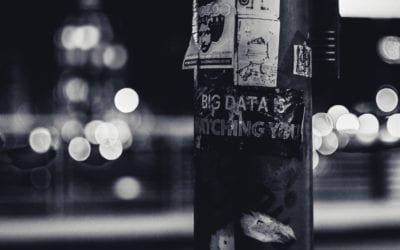Having spent, probably, the last decade of my professional career in Communications, a pivot towards Data Science seems like a far stretch. I mean Communications Director != Data Scientist. Right?
Communications
As a Communications Director, your role becomes more strategic as the months and years go by. At first, you may have fires to put out or low hanging fruit that needs tending to, but soon, you’re looking towards year-end goals and onwards. You began to focus more on budget and were to spend whether on capitol investment or media purchases.
As Communications Director, one of my roles was selecting media purchases based on the best R.O.I. (Return On Investment) during our event marketing campaigns -more bang for your buck. Definitely, another part of my role was to relay marketing and/or communication efforts, along with spending, to our stakeholders (namely our executive team). Another was optimizing our communication channels for optimum target audience reach. In reality, marketing and communications have a pretty firm handshake here. Especially in the smaller non-profit environment, I was in.
The one unifying, overarching constant in my communications role was data. All decisions made were on data. Whether media buying on Facebook or Instagram to selecting the best Google Ad Words to bid on, it all relied on our R.O.I. Our online web properties had heat maps set upon them to track end-user movement. This allowed us to optimize our property landing or content pages. A/B testing was performed on all our email campaigns, and the winning design would dynamically be chosen. Then heat maps were used. Everything revolved on measured success.
Data Science
That’s a hard jump, Communications Director to Data Scientist. Well, for myself, it was an easier decision than most — I have a Physics/Mathematics undergrad B.S. degree. Physics to Communications is probably another post, but just know that I have an analytical background. It was difficult to remember my Statistics, Linear or Matrix Algebra as well as coding from college. But utilizing Python (the language of choice for Data Science) is a more simple language to learn, and all the corresponding libraries make Python development so much easier.
The part of Data Science that I enjoy the most is probably visualizations. I like to think that’s my jam. What better way to change hearts and minds than with hard data in a beautifully designed Tableau dashboard or Plotly ( I prefer Tableau). I mean clicking on filtered charts to produce more detailed facts — that’s just sexy and if that doesn’t affirm position or change minds, what can?
Predictive Analytics and their corresponding models (algorithms) are great too. Training and testing for the best model are seriously a challenge and game (best model wins).
What’s Next
My next steps in Data Science are yet to be defined. Data Science has now afforded me opportunities at startups developing integrated dashboards and in Data Science Marketing. Startups can definitely yield great rewards, but with that many risks. Data Science Marketing is pretty much what I used to do in my strategic role as a Communications Director, but with more detail and probably more data modeling.
Whichever role I land on next, It’ll be an adventure.
Have you recently had a career pivot in your profession? Feel free to share or ask your questions below.



